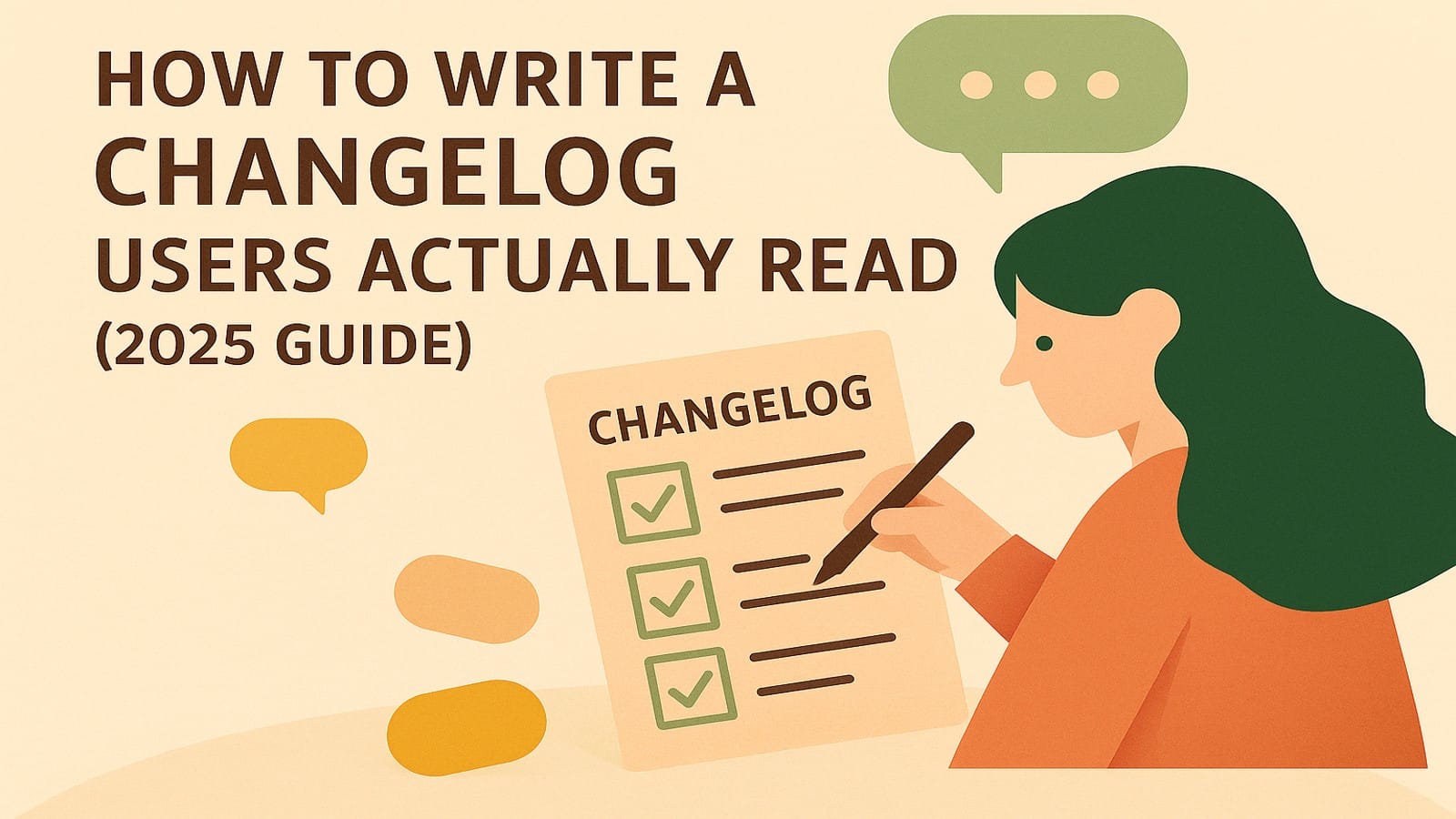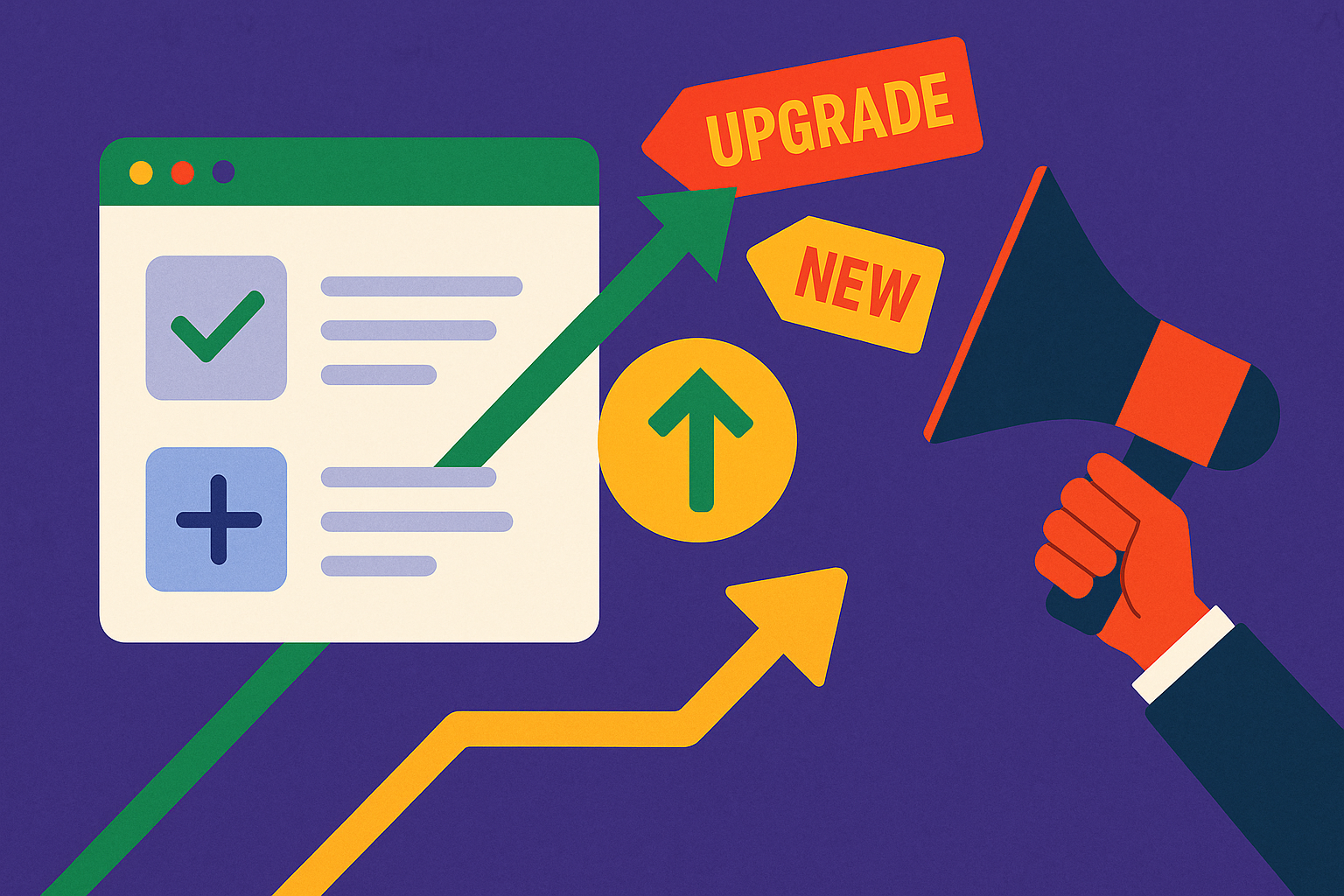Key Takeaways
- Write for humans: Focus on benefits, not code.
- Make it visual: Use screenshots and clear formatting.
- Be consistent: Announce everywhere users look.
- Invite action: End every update with a CTA.
- Measure impact: Track open rates, feature adoption, support tickets.
Introduction
You ship features, squash bugs, and improve your product every week. But let’s be honest—most users don’t notice.
Your changelog goes unread, your “What’s New” email gets buried in crowded inboxes, and adoption of new features is lower than you hoped.
If you’re a Product Manager, Founder, or Technical Lead, this isn’t just annoying—it’s a real problem. According to Intercom, 60% of users are unaware of new features unless they’re clearly communicated.
The difference between a changelog that’s ignored and one that drives product adoption could be the difference between steady growth and stagnation.
In this guide, you’ll learn a proven, repeatable system for writing changelogs users actually read—complete with templates, examples from SimpleDirect’s customers, and our own 60% open rate formula.

Why Changelogs Matter More Than Most Teams Realize
A bad changelog isn’t just a missed communication—it’s a missed growth opportunity.
The Costs of “Unread Changelogs”:
- Wasted dev effort: If users don’t know what’s new, feature adoption suffers & feedback dries up.
- Support ticket overload: Users keep reporting “missing features” you’ve already shipped.
- Launch chaos: Important launches get lost, leaving stakeholders and users confused.
Potential Payoff:
- Teams using a consistent announcement strategy see up to 4x higher feature adoption (SimpleDirect Customer Benchmarks, 2024).
- Support costs drop by up to 30% after thorough changelog rollouts (real example below).
- Users feel heard and invested, because they actually see your progress.
Bottom line: Effective changelogs save time, reduce support chaos, and drive growth.
The 6-Step Framework for Writing Changelogs People Read
Here’s the exact process SimpleDirect and our top customers use for “can’t-miss” product updates—no bluff, just practical.
1. Write for Humans (Not Techies)
Your users aren’t refreshing your GitHub releases. Keep language simple, clear, and relevant.
Instead of:
“Refactored authentication authz subsystem (#234).”
Write:
“Sign-in is now 2x faster—and you can finally use Google login!”
Tip: If your mom couldn’t explain it, rewrite.
2. Lead with the Value—Not the Feature
Every update should answer: What’s in it for the user?
- Instead of: “Added new automation triggers.”
- Try: “You can now schedule automated check-ins—no more manual reminders!”
Template:
[Outcome]: Now you can [do specific thing] with [new feature].
Example: Faster onboarding: New users now get a guided tour, so they’re productive in minutes.

3. Make It Skimmable (Bullets, Emojis, Headings)
Long paragraphs kill attention.
- Use bullets for updates
- Add bold for key points
- Use emojis or icons for visual impact (✅, 🚀, 🛠️)
- Group by type (“New,” “Improved,” “Fixed”)
Example Structure:
TEXT🚀 New:
- Schedule automated check-ins
- Google login is here
🛠️ Improved:
- Sign-in now twice as fast
🐞 Fixed:
- Resolved notification bug for Firefox users
4. Include Screenshots or GIFs
A screenshot is worth 1000 words.
- Before/after comparison images
- Quick GIFs showing new workflows
- Alt text for accessibility/SEO
Pro Tip: Changelogs with images see a 50% higher click-through to feature docs (SimpleDirect data, 2024).
5. Announce Across Multiple Channels
Don’t just update your “/changelog” page.
- In-app notifications
- Email (with clear subject lines: “🚀 What’s New: Google Login + Automation”)
- Slack/community channels
- Social—especially if it’s a major launch
Link back to your full changelog for details.
6. Close With A Next Step or CTA
Don’t assume users will figure it out. Nudge them:
- “Try it now—here’s how!”
- “See a bug? Reply to this email or hit ‘Feedback’ in the app.”
- Invite feedback or questions
CTAs = Higher engagement + invaluable user feedback.
-1760260070346.jpg)
Real Example: How [Acme Team] Doubled Feature Adoption (with Changelogs)
Before:
- Updates posted as dense release notes; open rate: ~25%
- Support tickets: “I didn’t know about X!” spiked after every launch
After switching to new format:
- Short, value-focused changelogs (bullets, screenshots, emojis)
- Published in-app & via email
- Added “Quick Start” link for new features
Results (over 60 days):
- Changelog email open rate: 62%
- Feature adoption (30-day active use): +91%
- Support tickets on “missing features”: Down 37%
What didn’t work: Pushing too much technical detail still lost most readers.
Lesson: Always lead with the why, not the code.
Get Started: Your Quick Changelog Template
Copy & adapt this today:
TEXT🚀 New
- [Benefit-driven update]: Now you can [user value]
(Screenshot or GIF)
🛠️ Improved
- [Improvement summary]: [Plain English description]
🐞 Fixed
- [Bug fix #1]: Brief, no jargon.
Need help? [Contact support link]
What to avoid:
- Long paragraphs
- Jargon
- Listing internal ticket numbers
Pro tip: Batch changelog reviews with your team before release—ensure clarity for non-engineers!
Want this as a downloadable checklist? Sign up for our newsletter and get our “Changelog Template Pack,” used by 100+ SaaS teams.






